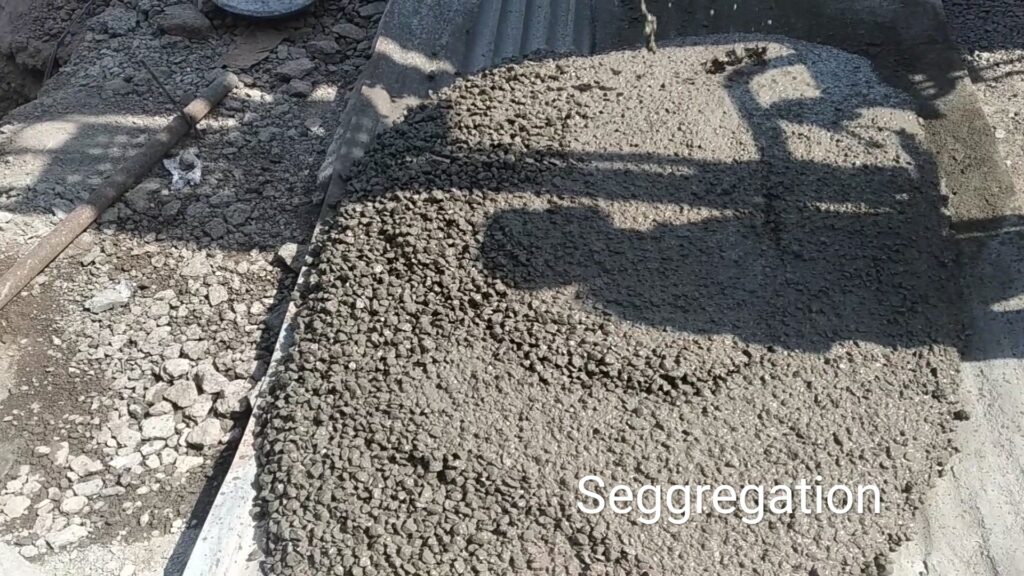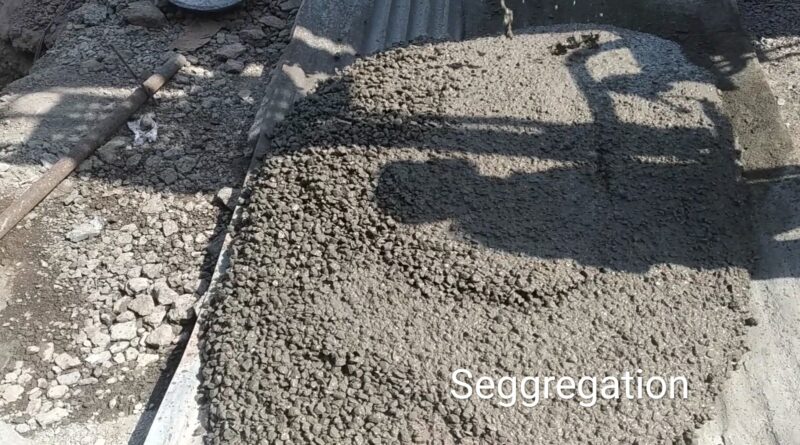Segregation and Bleeding of Concrete – Causes and Prevention
Segregation of concrete is the separation of constituent materials (cement paste and aggregates) of concrete from each other during handling and placement.
segregation is may be divided into the following three types :-
- Cement paste separated from the concrete during its plastic stage before hardening
- Separation of Coarse aggregate from the concrete mixture
- Water Separate from the concrete mix

Segregation of concrete affects the structural strength and durability of structures . A good concrete is one in which all the ingredients are properly distributed to make a homogeneous mixture.
Cause of Segregation in Concrete
- The primary cause of Segregation in concrete is the differences in specific gravity of the concrete material (fine, coarse aggregate and cement). The specific gravity of aggregate is in between 2.6-2.7g/cc and for cement its lies between 3.1-3.6 g/cc, due to these differences, the aggregate separates from the matrix and causes segregation in concrete.
- So much vibration of concrete with needle vibrators makes heavier particles settle at bottom and lighter cement sand paste comes on top.
- Dropping concrete from more than 1.5meter height can cause segregation.
- Use of high water-cement ratio in concrete .
- Transporting concrete mixtures for long distances.
How to Prevent Concrete Segregation
- Segregation can be control by adding , admixtures, air entraining agents and supplemantry cementious materials in the mix.
- Dropping concrete from more than 1.5 meter height can cause segregation so use chute or Boom Placer for Pouring . The angle of inclination may be kept between 1:3 and 1:2 so that concrete from top of chutes travels smoothly to bottom, use of small quantity of free water from top at intervals helps in lubricating the path of flow of concrete to bottom smoothly.
- Segregation can be minimized by maintaining proper proportioning the mix.
- Segregation can be controlled by using proper diameter needle for vibration
Bleeding in concrete
Bleeding in concrete may be considered as the physical migration of water towards the top surface .

Bleeding is a form of segregation in which water present in the concrete mix is pushed upwards due to the settlement of cement and aggregate. The specific gravity of water is low, due to this water tends to move upwards. Bleeding ordinarily occurs in the wet mix of concrete.
Note :-
- Excessive bleeding breaks the bond between the reinforcement and concrete.
- Forming of water at the top surface of concrete results in delaying the surface finishing.
WAYS TO REDUCE THE BLEEDING OF CONCRETE
- Proper proportioning of concrete .
- A complete and uniform mixing of concrete
- If we can increase the traveling length of water to be bleeded, the bleeding can be reduced considerably. For this purpose we can use finely divided pozzolanic materials.
- An introduction of air-entrainment by using air entraining agent can reduce bleeding.
- The use of finer cement.
- Application of cement of alkali-content.
- By using of a rich mix rather than lean mix.
- Controlled vibration can reduce bleeding. When bleeding is appeared in the fresh and plastic concrete, revibration of concrete in controlled way can overcome detrimental impact of bleeding.

